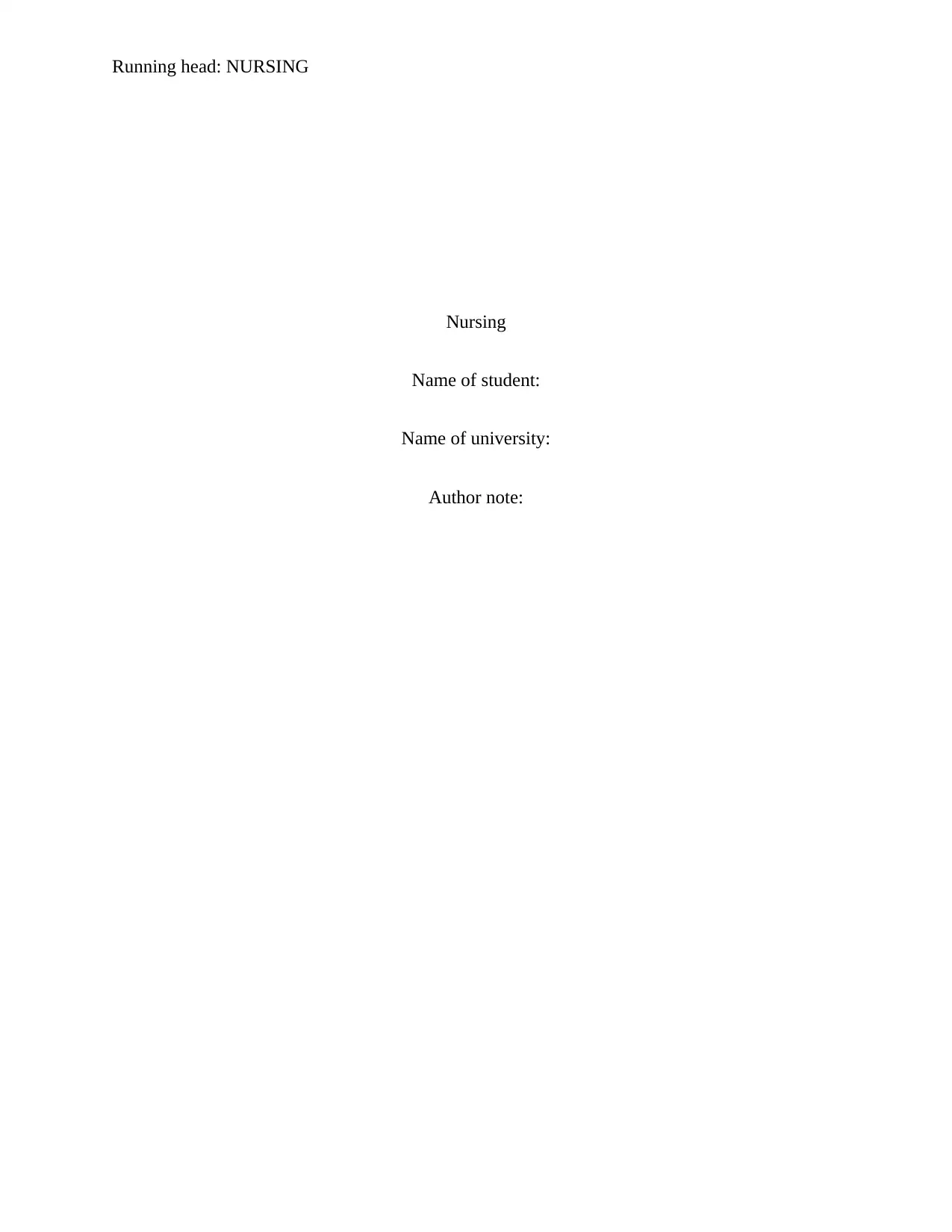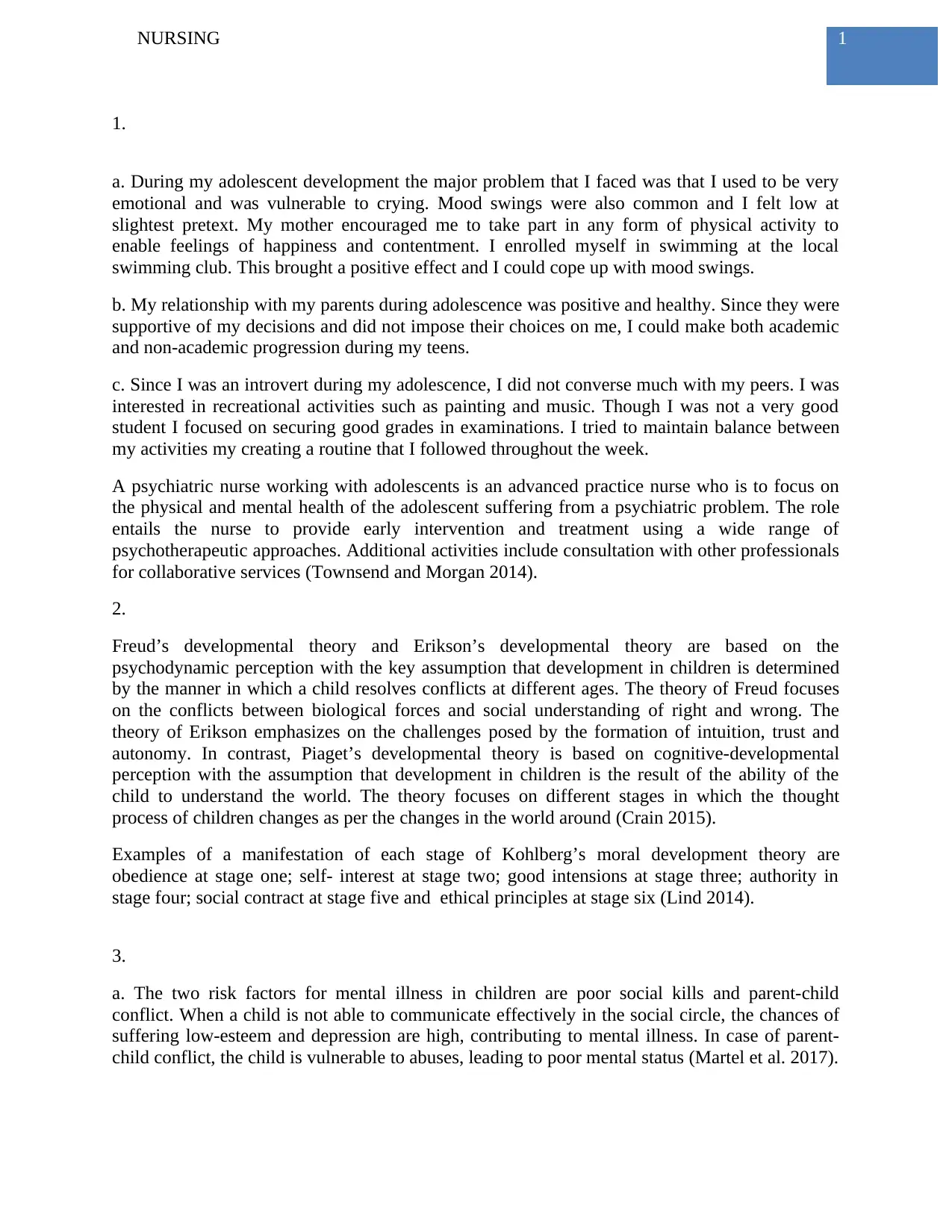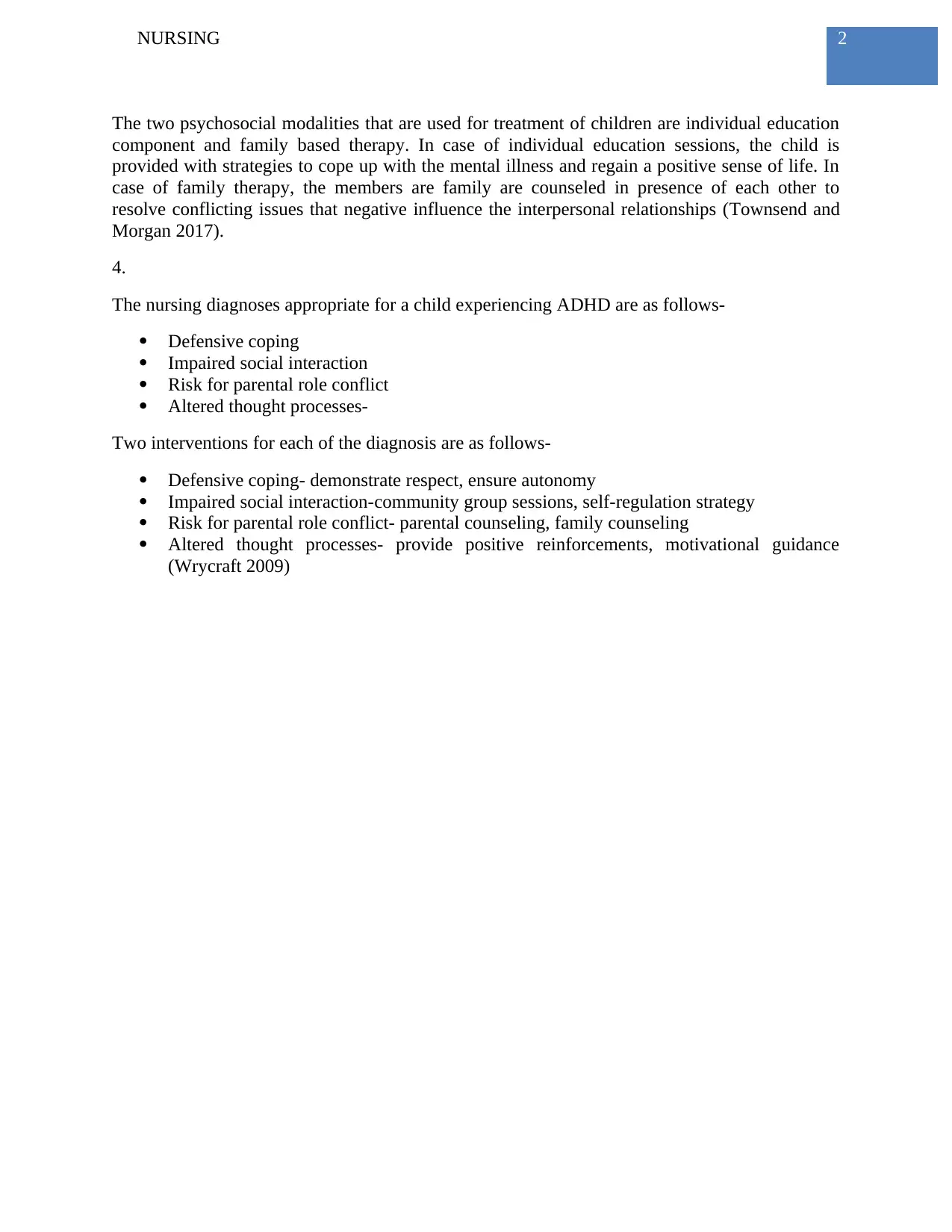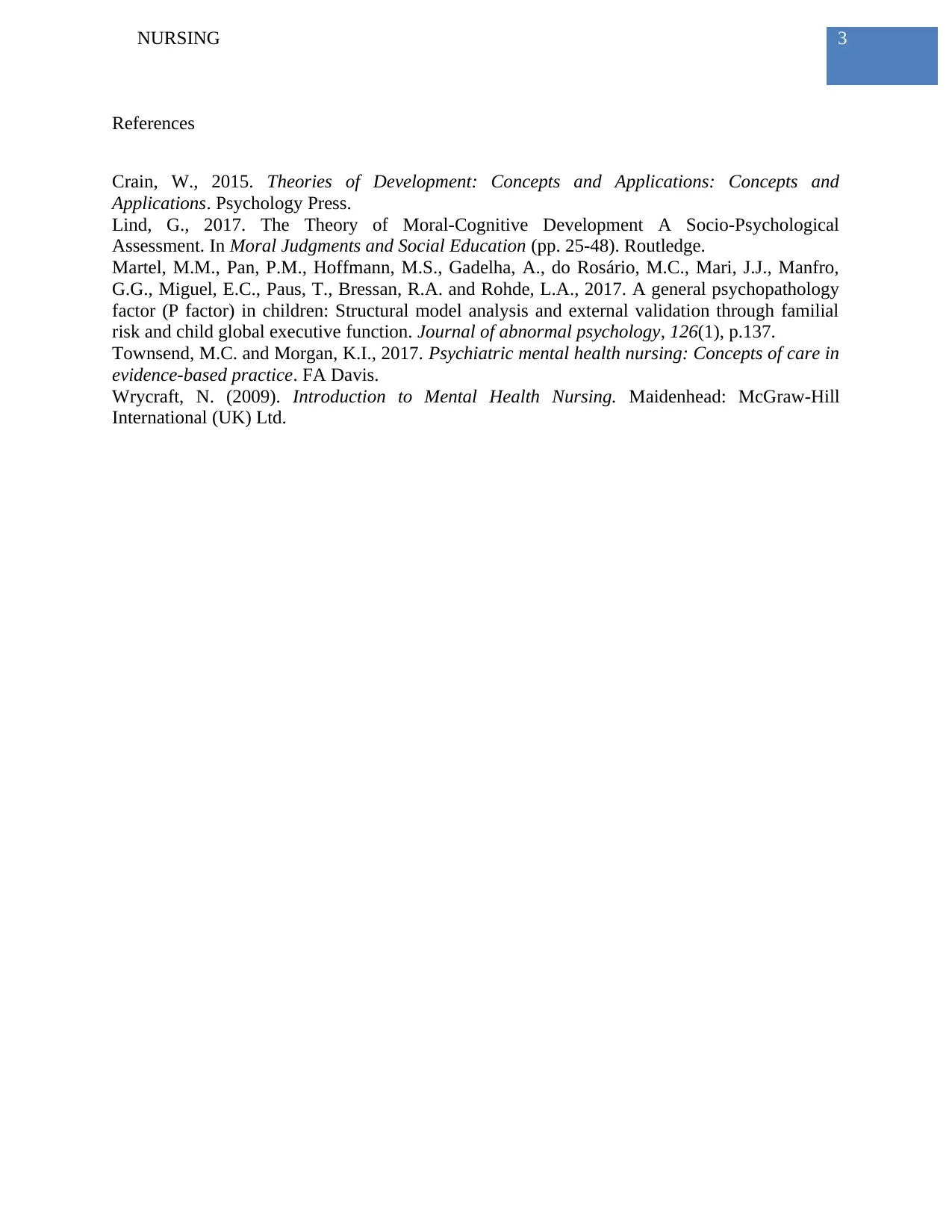Nursing Adolescent Development, Psychiatric Nursing, and Child Mental Health Treatment
VerifiedAdded on 2023/06/10
|4
|899
|313
AI Summary
This article discusses adolescent development, psychiatric nursing, and child mental health treatment. It covers the theories of Freud, Erikson, and Piaget, risk factors for mental illness in children, and psychosocial modalities used for treatment. It also provides nursing diagnoses and interventions for children with ADHD.
Contribute Materials
Your contribution can guide someone’s learning journey. Share your
documents today.
1 out of 4
![[object Object]](/_next/static/media/star-bottom.7253800d.svg)








